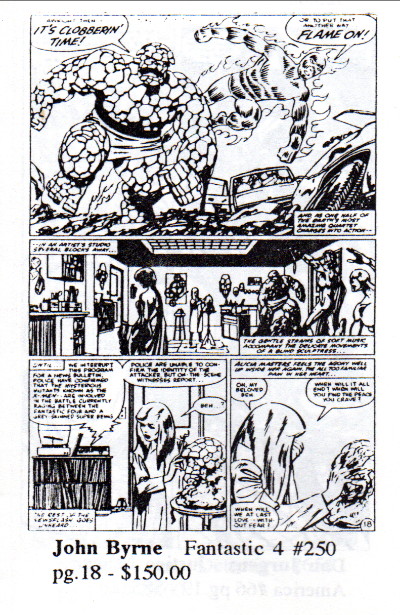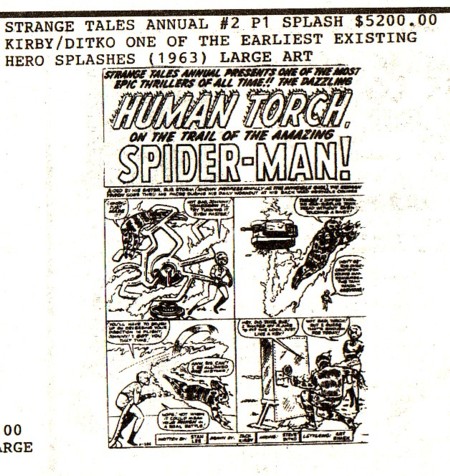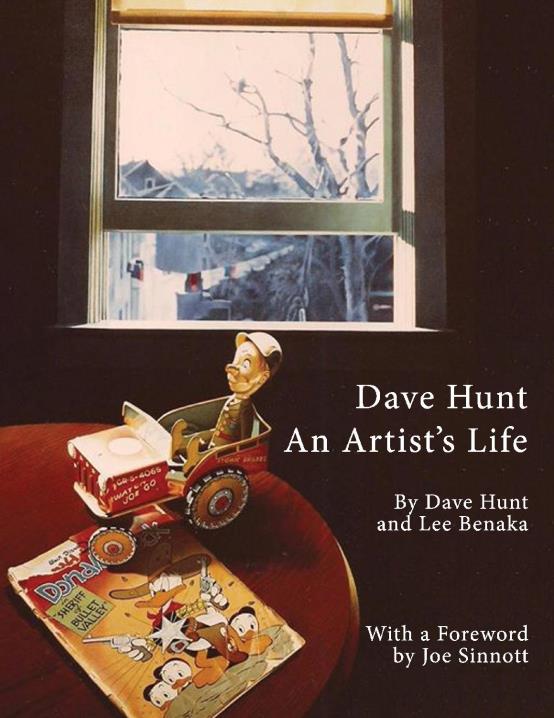I was born in Philadelphia in 1970 but grew up in the suburbs of South Jersey, which is a uniquely diverse place in so many ways as regionally it's less than 20 mins from the 5th largest U.S. city (go Eagles!). Twenty minutes in the opposite direction is farmland, and it takes less than an hour to drive to the Atlantic Ocean, and under two hours to drive to the Pocono Mountains. Economically, it's minutes from the struggling-but-making-a-comeback City of Camden and the historic well-to-do boroughs of Haddonfield and Moorestown. Socially, I was exposed to all kinds of ethnicities, backgrounds and beliefs in the area. In other words, it was a fascinating place to live in and be exposed to the world at large.
What were your favorite comics and comic book artists when you were growing up?
As a child of the 70s, my 'Golden Age’ of comic reading was 1976 to 1984 (give or take). Titles like Amazing Spider-Man (ASM), Avengers, Captain America, Fantastic Four, Hulk, Marvel Two-in-One, Thor and Uncanny X-Men were the Yin to my Yang of Detective Comics, Flash, Green Lantern, Justice League of America, Secret Society of Super Villains, and the Teen Titans (old & new). It probably wasn’t until around 1978 that I cognitively recognized that my eyes were drawn to certain talents such as Byrne, Perez, Romita Jr, 'Buckler & Abel’, Pollard, Sal B., and others. It was probably another year before I realized that some the comics I was reading were reprints (and not newly published comics), and that Kirby, Ditko, and Johhn Buscema were also grabbing my attention and imagination!
When, and under what circumstances, did you see your first piece of original comic art?
Back in 1981, my local comic specialty shop (Eldorado Comics) hosted an up-and-coming young artist named George Perez for a store appearance, and, shockingly, I may have been the first to show up. My Mom paid George to draw and color whatever character I wanted. I chose Wolverine, in the brown and orange costume (probably still his best look!). This was my very first exposure to Original Art. (And yes, of course, I still have that drawing!)

Fast forward to 1991, my college days. I was again an avid comic reader, heavily collecting Silver Age Marvel comics and also hustling comic books, from local shop to shop, making good pocket money. I attended a local convention run by Tri-State in Delaware and met its promoter, art dealer Hans Kosenkranius. (Don’t try to pronounce his name, just go with the story.) Hans had not one but two consecutive pages from ASM #13 by Steve Ditko! I had seen original art the year before, pictured in the Sotheby’s catalogue, but up until this point not in person. Although I didn’t exactly have the money to buy these pages, seeing and holding them made me realize these originals really existed, and I had to find them! So after thumbing through the CBG for the next couple weeks, I found a local collector selling a few pages and managed to buy two Gil Kane pages from ASM #102 (Lizard, Morbius, and six-armed Spidey) for about $75 each! This was completely a new experience for me, not only with getting my first couple of original art pages, but also the first time I remember sending money through the mail. (And I really did eat ramen noodles the next couple days and didn’t go out that weekend cause my budget had been compromised!)
What were some of the first pieces of art you purchased, and what were your sources for your early art purchases?
Now you’re making me really scratch the ol’ noggin because it’s literally been thousands of pages that have come and gone through my hands. But after those ASM #102 pages, I remember picking up a Bagley ASM splash (#351 or 2) out of an ad in the CBG for around $150. This art got left out on my lawn by UPS and rained upon, which is why I rarely use UPS to this day. I also got a half-splash complete with a “It’s Clobberin’ Time!” and “Flame On!” panel from FF #250 by Byrne for $175 from Mitch Itkowitz. Then I really stretched and got a Spidey vs Doc Ock battle page from ASM #12 by Steve Ditko in a roughly half cash/half trade (for comic books no less) deal to the tune of $3k from Bechara Maalouf back in 1992.

I also began attending conventions, locally and also in NYC, where I met Jim Warden for the first time, from whom I would go on to purchase literally tens of dozens if not hundreds of Byrne pages. I also met Pete Koch, Scott Dunbier, Albert Moy, Tom Horvitz, Conrad Eschenberg, and many others. Besides all of the dealers mentioned above, I began networking with fellow collectors, and a mutual friend put me in touch with Mike Burkey around 1992. This was back when Mike owned a comic book shop and was an original art collector who would occasionally trade art…that is, if you had Romita ASM pages to trade back to him. I was really glad Mike preferred interiors and was willing to trade me covers for pages. (Before anyone gets too excited, Mike was trading me Romita Jr ASM covers and the like for Romita Sr pages, which were about equal value back then.) Early on, I remember buying from Mike a killer Byrne Captain America #254 page with Union Jack battling Baron Blood for $25, which even back then was cheap but was priced as such since Cap was not on the page.
What inspired you to begin to sell original art, and did you have any mentors when you began to sell art?
From Day 1, I was a ravenous collector, not only of the originals themselves, but also for knowledge about the hobby, so I paid attention and absorbed all I could from those I encountered, especially those who had been around and came before me (pretty much everyone mentioned above). For the first three or so years, I did not sell anything, but did on occasion I did trade for more wanted pieces and as such was proactive in going after original art that interested me. Some collectors cannot bear to part with anything they buy, whereas if what I was getting back was as good or better (at least in my eyes) than what I was giving up, then it was a win-win.
Out of necessity to grow my collection came the idea to become a dealer, but back then it seemed the dealers were well ahead of me in terms of inventory, connections, and capital. So I continued to work on and grow my own resourcefulness, and although chronologically younger and also newer to the fold, I was also determined to follow my instincts. I already loved the hobby, so what could be better than to make a living within it while continuing to collect?! I had always observed more seasoned fellow collectors around me like my ol’ pal Stu Deitcher work deals, along with watching more polished collector/dealer types like Hans work conventions. And then a full-time dealer like Bechara would on occasion take the time to point out some of his more nuanced negotiations. Don’t get me wrong, not every piece was on the table—I still have some of the same core pieces in my collection from over 25 years ago (and yes, still actively collecting), but it was more that I was open to the idea of buying, selling, and trading to grow and better my collection. And even after all these years, although I may be experienced in the ways of The Force, I still observe and continue to learn.

What led you to begin to put ads in The Comic Buyer's Guide?
The CBG was the cutting-edge media of it’s day, where every dealer advertised at one time or another throughout the 1980s and 1990s. I saw others doing it and figured I could make some sales (or trades), network, and gain new contacts, or maybe even be offered something good for sale.
What kind of work went into the creation of your CBG ads?
This is one of those things I probably could have done better, but I used to take 8.5" x 11” Xerox copies of the art and reduce them down smaller, like to 2.5" x 3.75” to fit on onto a sheet of paper, to which I would attach brief typewritten descriptions (yes, with a typewriter!) of each piece, along with prices. Sometimes I'd even just hand-write the captions and then mail (gasp!) the ad to the CBG. (I’m almost laughing out loud thinking about how archaic it sounds by today’s standards after only 15 or 20 years!)
Where did you get the art that you sold in your CBG ads?
Conventions, other collectors, and dealers, but mostly from what was already in my own collection that I decided to upgrade, or pieces I had that were 'duplicate' examples, or pieces I was just forced to sell because I needed the money.
Why did you stop placing CBG ads?
I’m sure you already know the answer and have probably heard this many times, but this crazy thing called the intra-net (or something like that) took much of the wind out of the then weekly paper. This new-fangled contraption was quick, sometimes animated, and gave collectors other places to find original art, like eBay. But seriously, it really took the ‘freshness’ from the CBG, and fewer buyers shopped there, which lead fewer sellers to advertise. After a while, CBG lost its edge as ‘the' source to find vintage comic books and Original Art :\
Can you share any examples of great art finds you made in the "pre-internet" days of collecting?
Around 1994, on the way back from visiting my then-girlfriend at Rutgers University, instead of heading south on the turnpike I veered east toward the Jersey Shore and went to Toms River to meet with a collector who claimed to have ‘an old Romita Spider-Man cover’ in his garage. I say 'claimed' because more often than not folks don’t quite know (or remember) what they have, and too often what’s described is better than reality. Arriving just after dark, I was met at the front door and led to the garage by a pleasant, self-described Spider-Man fan. His garage was more like a rec-room, complete with pool table (not the drafty, oil-stained space filled with lawn tools that I’d pictured) and storage space above. He climbed a ladder and returned with several pieces of art in protective wrappings. To my surprise (and delight), he did indeed have an old Spider-Man cover —the cover to ASM #61 by John Romita Sr., with Spidey swinging in to save Gwen and Capt. Stacy from certain doom in all it’s Large Art glory! Even better was that he was willing to sell it to me, but he was skeptical (I suspect due to my age) of my ability to purchase it. In the end, he agreed that once my check for $7,500 cleared, I could return to pick up the cover. The following weekend I drove back to claim my prize :O)
Are there any pieces of art that you really regret selling, and/or amazing pieces that "got away" before you were able to buy them?
Very early on I managed to buy the cover to Marvel Two-In-One #46 by Keith & Bob (Pollard & Layton), likely out of the CBG, but the seller neglected to describe it had been folded in half and Hulk’s hair was a paste-up. As a recovering, condition-conscious comic book collector these factors bugged me...a lot…so I traded it. Dammit do I regret that. I actually regretted it almost immediately, but it was already gone when I tried to get it back a few days later. It hasn’t shown itself since but ohh man do I want this old flame back :\

Before owning a computer, I used to talk with another Spider-Man collector from Ohio who would fill me in on what art was being posted on the ‘net. We did many deals over several years, and we both had a good idea of the kind of pieces each was seeking. One night he told me about two covers being posted for sale that he thought would interest me —Fantastic Four #240 by John Byrne and Avengers #183 by George Perez! I believe they were something like $400 each, which at the time was above the going rate, so I asked him to see if he could get them for no more than $350 each. He managed to get the FF cover for me (which yes, I still have) but the Avengers cover was already gone before he made the offer. Oh how I still want Avengers #183 with the team battling Carl ‘Crusher’ Creel!
Then about 10 years ago a well known collector and pop culturist started releasing his collection via eBay, and a friend won a lot. When he made contact with the seller, he discovered that there was more to this collection than what was on eBay —it was mostly centered around DC, but there was an iconic Marvel cover in his collection. The problem was my friend had made several large purchases elsewhere, and along with this eBay win, was not in the position to come up with another 50k in 24-48 hours to purchase this Marvel cover. He offered to turn it over to me but I had to come up with the funds in the same 24-48 hours timeframe, which I was just able to, but it would literally have cleaned me out. Having a young family, and without a quick ability to borrow capital, I just was too hesitant to pull the trigger on the iconic Avengers #57 cover :(((
Do you have a particular approach or philosophy for your current Will's Comic Art Page business, and what makes you stand out from the competition?
I treat customers the way I wish to be treated —communicating, listening, sharing insight, dealing fairly, and also having a long-term outlook on this hobby. I’ve seen lots of collectors and even some dealers come and go, but I’m not going anywhere. I love this hobby, and my feet are firmly rooted in the ground. People know I’m still a collector, not just in this to make a buck, and I connect with them on that level. I’m confident in my abilities to find pieces and make deals happen, but I'm not so set in my ways that I’m ‘difficult’ —collectors know me as someone who can make a deal with those they sometimes deem ‘impossible’ to deal with.







